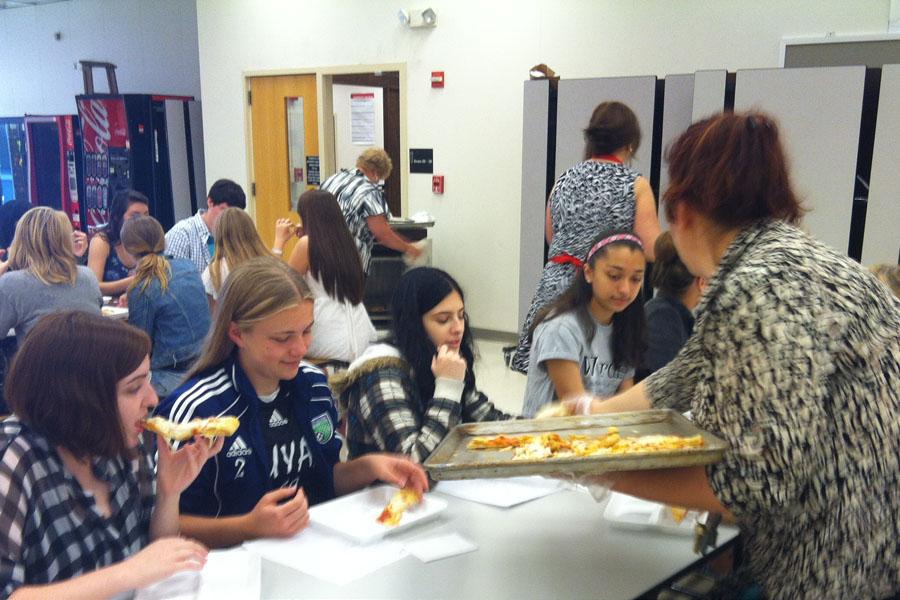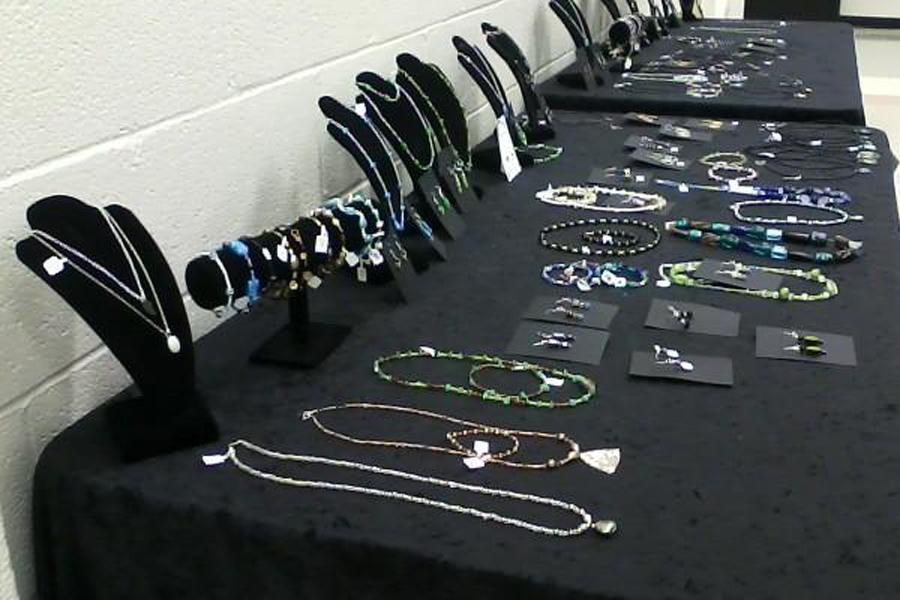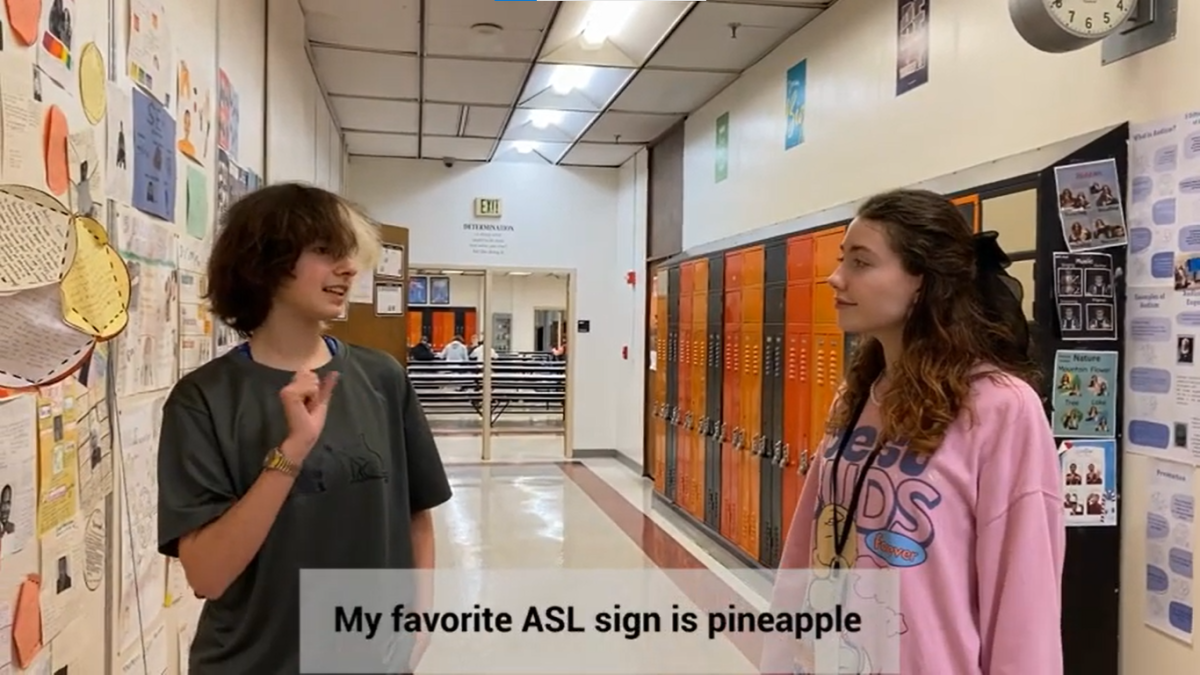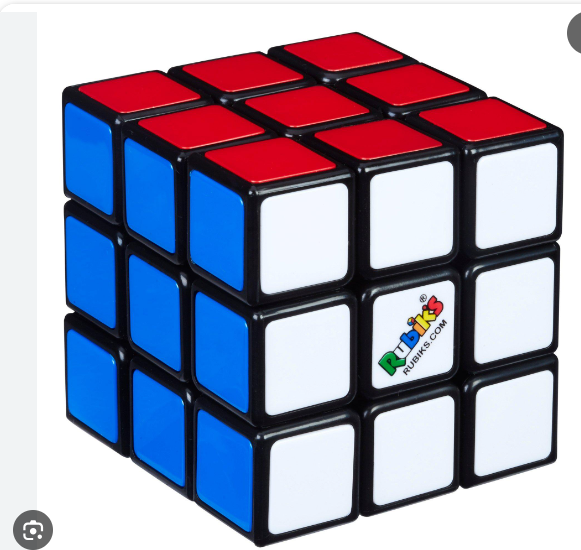By Shannon McKenna
Round Table reporter
In her mind, the plush kitten has rich chocolate brown fur with a clean white chin, with baby emerald eyes that stare up adoringly and mesmerize onlookers. The tips of its ears and tail are midnight black. Snug around its neck is its collar, a vibrant sapphire for a regal creature. Stuffed perfectly and fully proportioned, the toy was made to be loved.
In reality, time has aged the once majestic feline. Faded colors are now all that remain. The chocolate fur has melted to a dull tan; the wrinkled white chin has faded to a mature gray. Its emerald eyes still have a hint of twinkle, brought to life by many years of love. The stuffing is no longer in place, several pieces having long since fallen out. And the sapphire collar? A distant memory now; a small red ribbon hangs loosely in its place.
Time hasn’t changed sophomore Marisa Shields’ feeling for her beloved “Kitty Kat.” She loved it then and she loves it now. Even though age has taken its toll on “Kitty Kat,” it is something Shields plans to hold on to – literally and figuratively – for the rest of her life because of the memories they have shared.
Most people have an item in their lives that they can connect to – a memento, something that holds a special memory.
“It … helps put us back in the situation. A boy can pick up a baseball bat and remember a game when he got a big hit,” said Middletown High School psychology teacher Jerry Donald.
For many people the keepsake is a special object from childhood, whether it is a stuffed animal, a necklace, or a baby blanket. Whether weaved into the fabric of a tattered baby blanket or stained onto the chipped paint of a ceramic doll’s face, each hold memories the owner never wants to forget.
MHS sophomore Krysta Twigg said she has had her baby blanket since she was very young. It’s faded fleece with the corners tied together. Most of the colors have been washed out with age, so the once-bright pinks and whites are no longer as vibrant. Hello Kitty grabs the spotlight on the front of the blanket, smiling and holding her little green purse, but even her iconic image seems to have aged.
Twigg’s parents gave her the blanket when she was very young and, because of that, she has always had an attachment to it.
“It’s my comfort item, knowing the people who got it for me really cared that much about me so I would never forget them even when I’m older,” she said.
While some students have special items that were given to them, others, like MHS junior Bunny Karger, have found their own and collected them over the years.
“Pictures of evergreen trees, pine trees, oak trees, and more that I took are hanging in my room,” said Karger. “They’re there to remind me of my old house from when I was little because I used to live in Colorado and it’s covered in trees there and sometimes I miss it.”
MHS freshman Sarah Weltman said the items that she has gathered over the years remind her of horses that are special to her. Pictures she has taken of her horses or her saddle and riding gear bring back memories that they shared.
When race horses become injured or get too old, they can no longer race. Smartie and Dixie were two of those horses, but as soon as Weltman saw them, she had to have them. Weltman saved Smartie four years ago and Dixie just two years ago.
“I love Smartie and Dixie so much,” Weltman said. “I’ve spent so much of my time with them and I can’t help but smile when I see anything that reminds me of them, even though I can usually just walk outside and see them.”
As people get older, some of their memories start to fade, making it harder to remember things that may have once been very special to them. This might be why, as young adults, they start saving items that contain memories, and those items become important to them.
“My grandfather gave me a porcelain dog before he died, so it’s one of the few things that I have to remember him by,” said Caleb Wilson, MHS sophomore.
Donald said that memories are not physical things, because a person can’t touch a memory.
“It is hard to throw away those types of things because it is like throwing away part of the memory,” he said.
While it may be hard to throw away things that have memories attached to them, sometimes it’s for the best, especially if the memory is too painful to keep reliving.
“Some people symbolically get rid of stuff like that. They make a statement that this part of their life is over,” said Donald. “An example is when some college baseball players leave a piece of equipment on the field after their last game. But even they don’t get rid of everything.”













